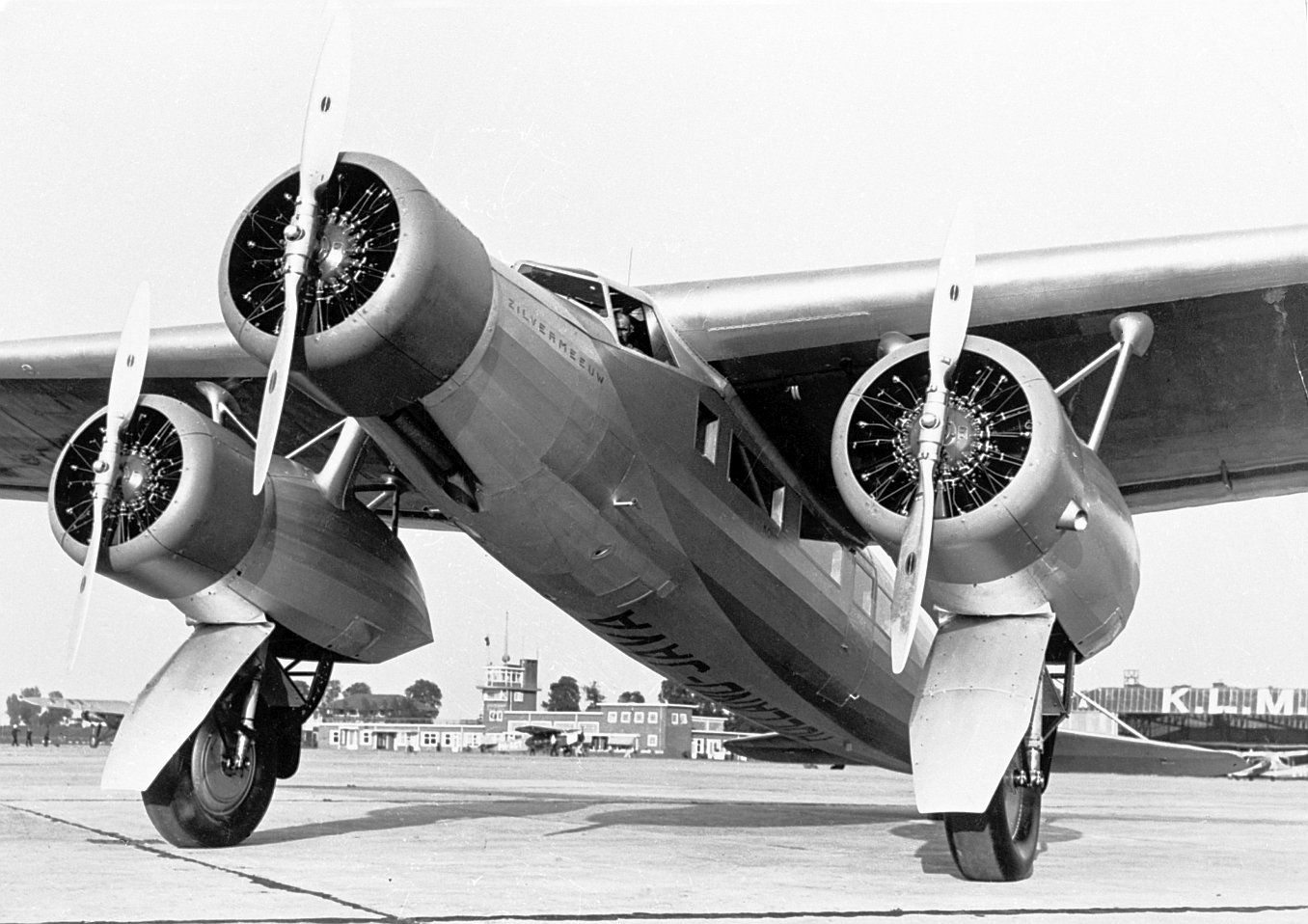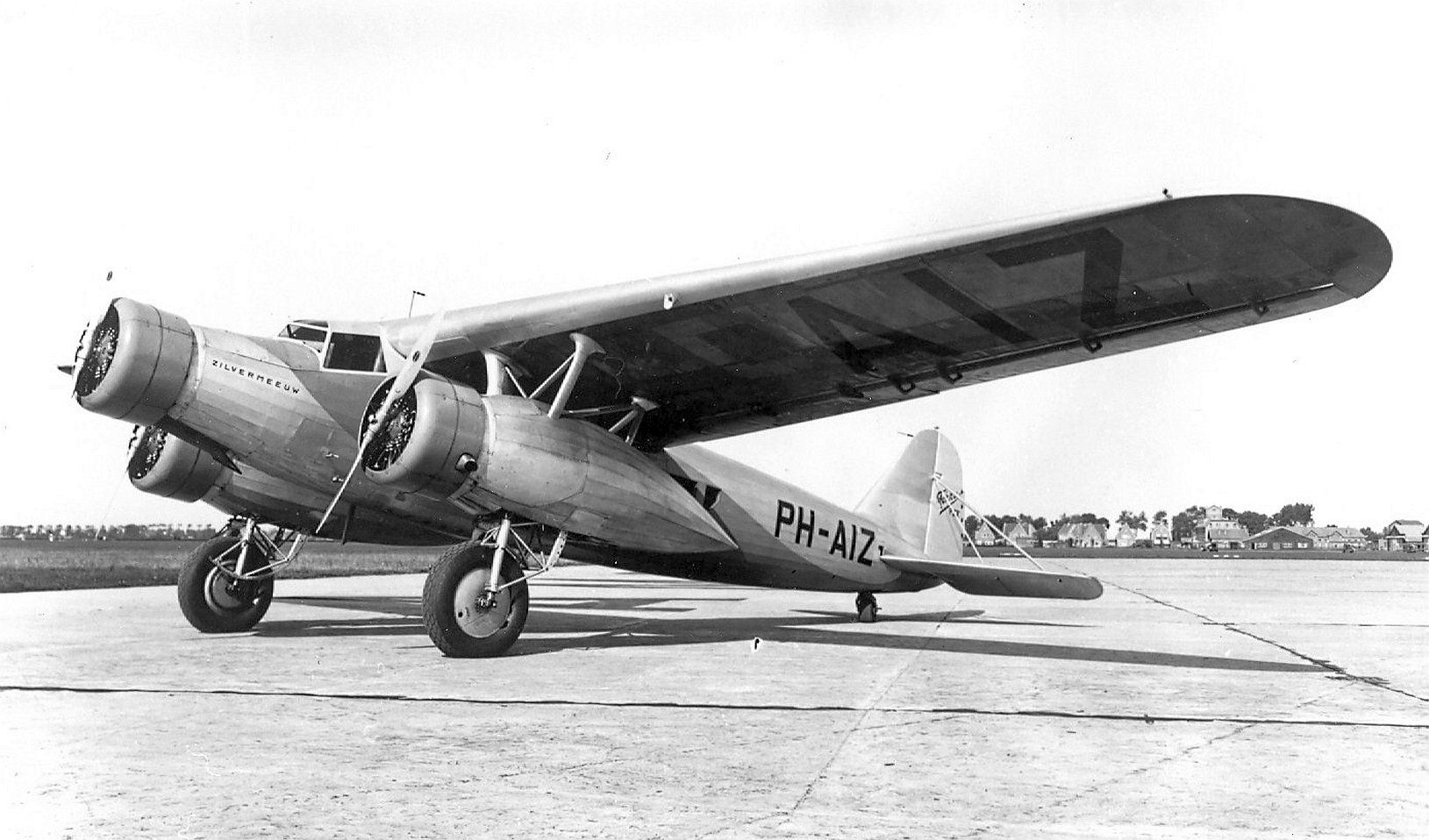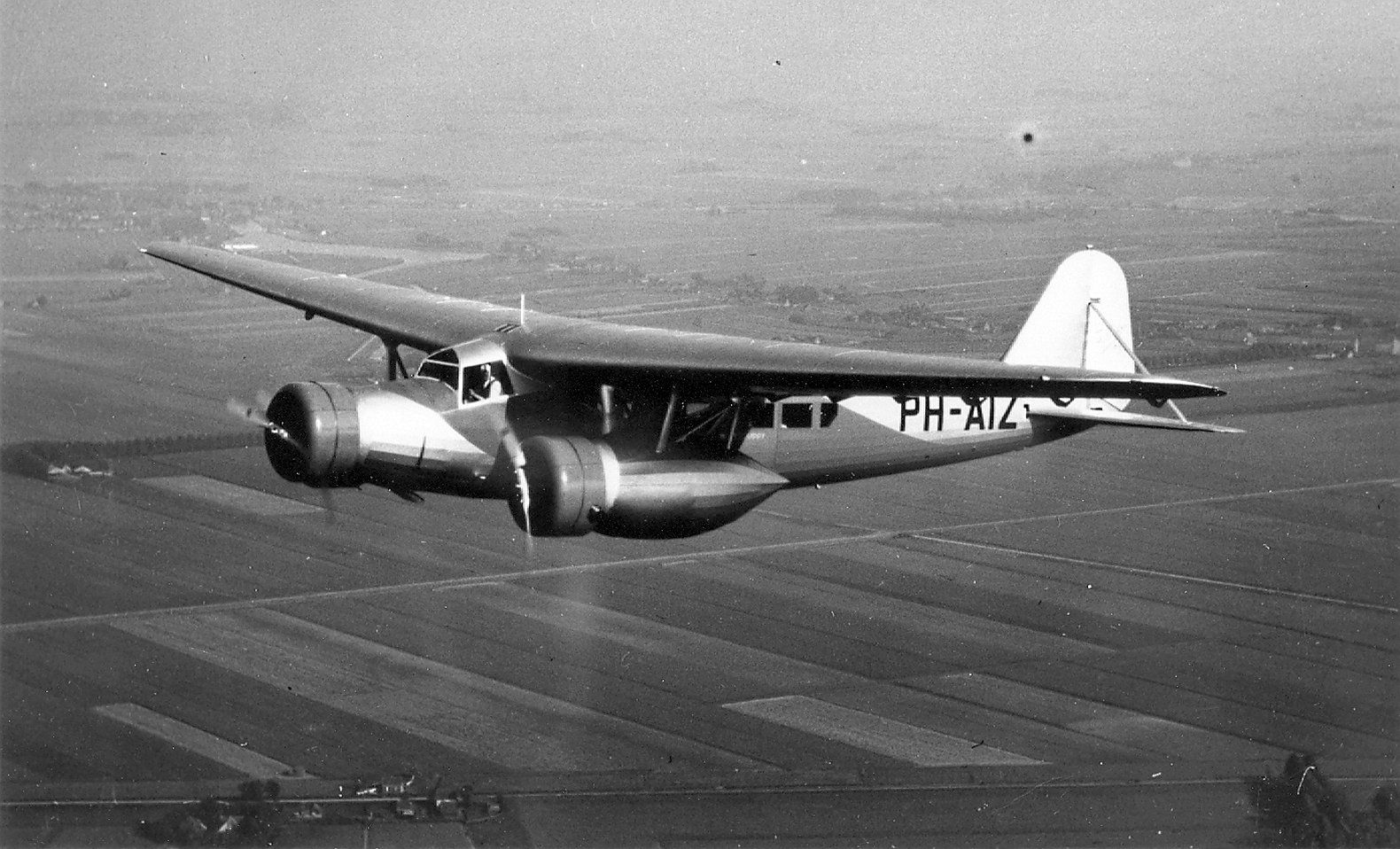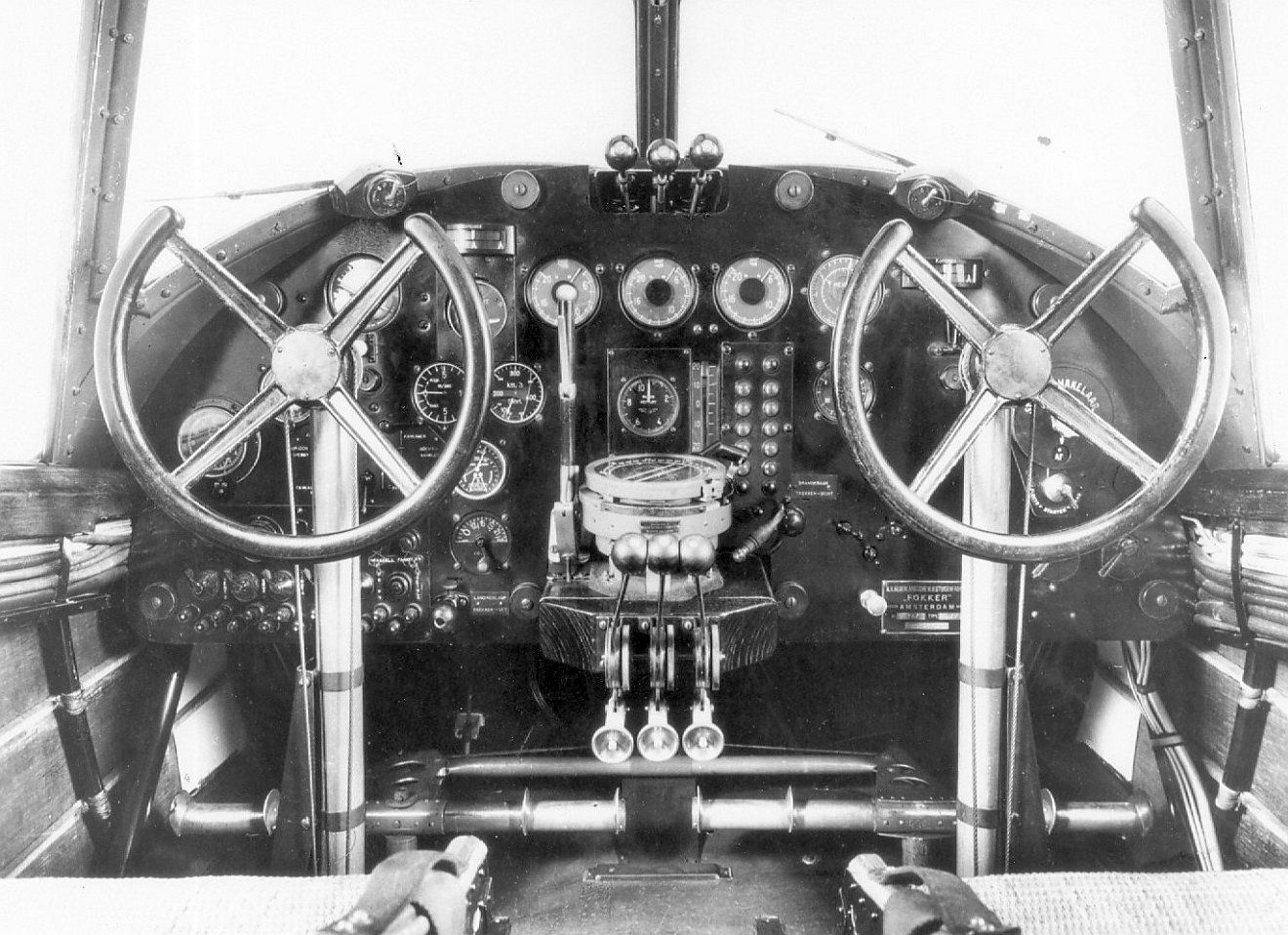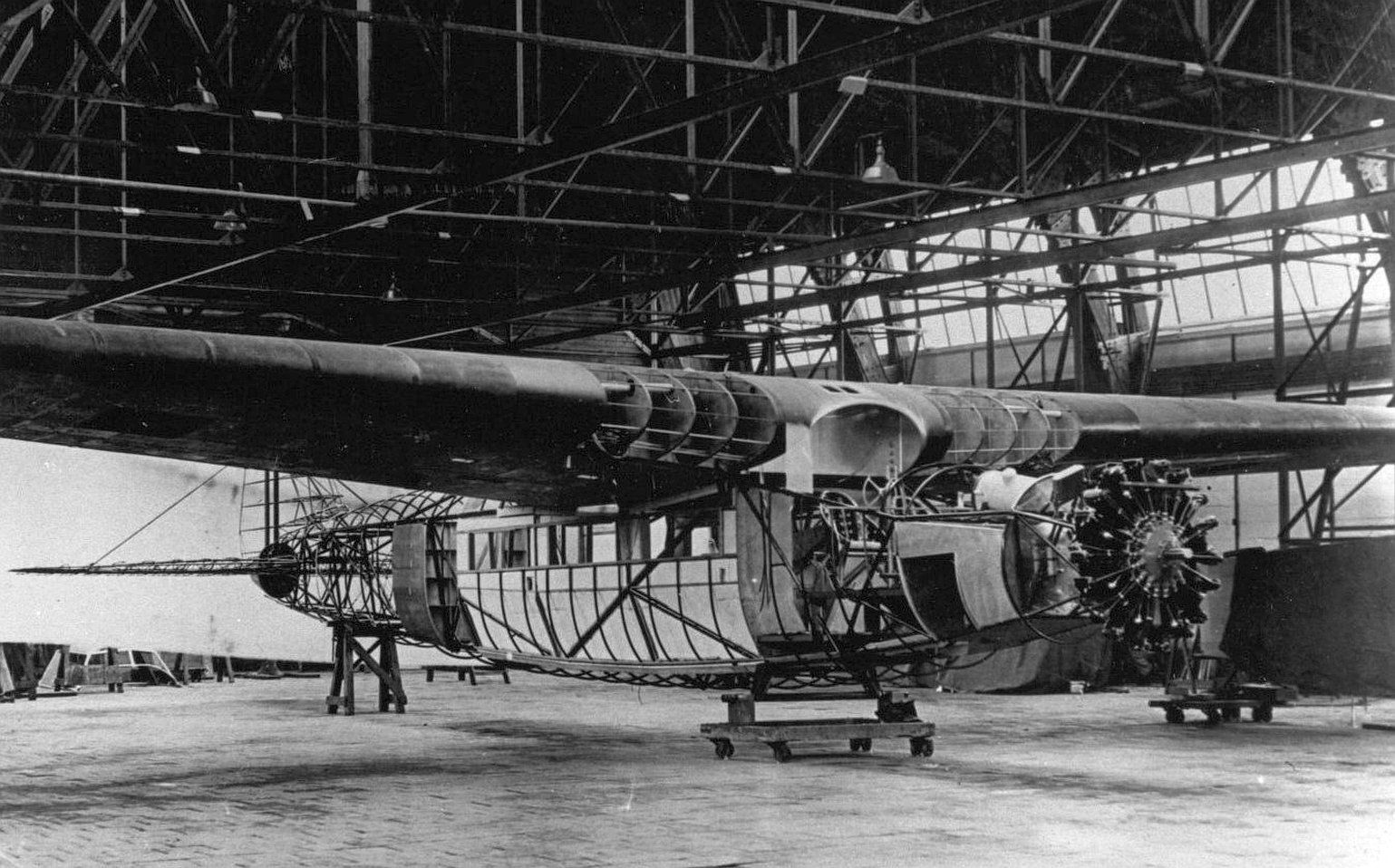Fokker F.XX
The F.XX was designed on behalf of KLM, who required an aircraft for the Indies line with a speed approximately 50 km/h or 27 knots faster than the F.XVIII.
Due to a number of improvements, the aircraft eventually reached a cruising speed of 250 km/hr. or 135 knots.
This aircraft, the only one built, made its first flight on June 3rd, 1933 and became one of the verry few Fokker aircraft prior to WW2 with a landing gear which retracted into the engine nacelles. The gear could be mechanically retracted by the flight engineer by turning a wheel in the back of the cockpit.
The three air-cooled, nine-cylinder Wright Cyclone R-1820-F were equipped with aerodynamic NACA hoods and adjustable propellers.
Later on, KLM replaced it with more powerful 690 hp Wright Cyclone R-1820-F.2 engines.
Although the windows in the 12 passenger cabin could no longer slide open, an emergency exit window was installed.
For the first time, the top section of the steering wheel was removed to enable the pilots a better view of the instruments.
Eventually, the F.XX was never used on the Indies routes. However, the aircraft was successful on the route that KLM opened on March 1st, 1934, part of the express service London-Amsterdam-Berlin.
The average speed on the Amsterdam-Berlin route was 252 km/h or 137 knots. The F.XX flew 1535 hours in that year, which was a record for that time. It was almost double of the average use of the F.XVIII at KLM (850 hours).
This F.XX, only one produced, served only a few years with KLM.
In October 1936, KLM sold the aircraft to the (paper-based) French airline Air Tropique. The aircraft was seen on May 1st, 1937 in camouflage colors and French registration F-APEZ at Le Bourget. Eventually the aircraft found its way to the Spanish Nationalists as EC-45-E
This unique plane crashed in Spain in 1938.
Click on the photo to enlarge the photo

